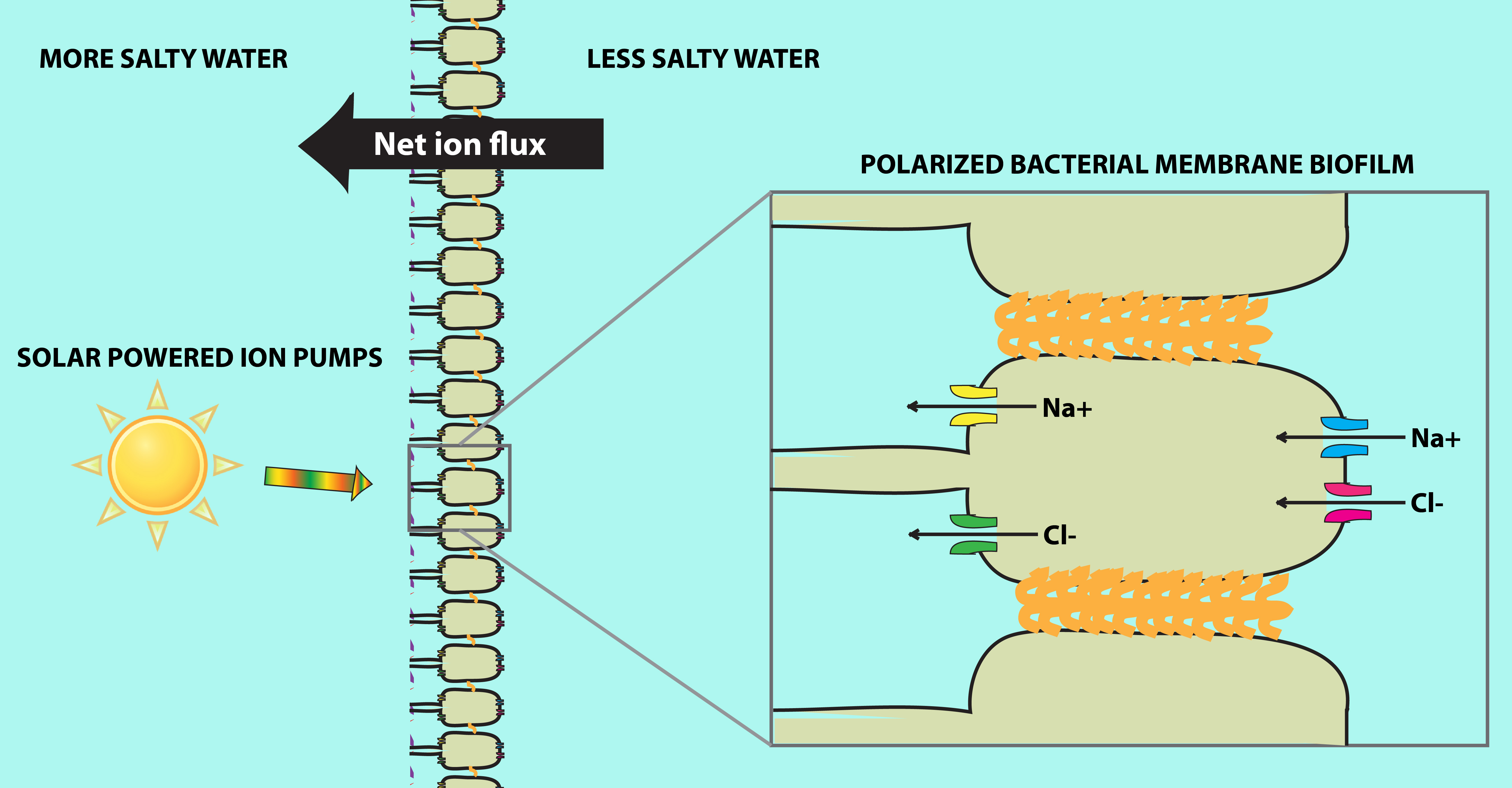Team:UC-Santa Cruz
From 2013.igem.org
Water shortages affect half of the world’s population (currently 7 billion persons). In the next 25 years the numbers of people impacted by severe water shortages is expected to increase four fold. Shortage of potable water has been estimated to account for 80-90% of disease and 30% of mortality for humanity. New energy efficient, scalable, low cost methods to desalinate sea water and brackish water are critical to address this basic need. We are developing an efficient sunlight-powered biomachine, for low cost desalinization of brackish water and sea water.
Our design has three main elements. The biofilm, formed by a collection of cells one layer thick, provides a physical barrier between water chambers, as well as a chassis to produce selective ion pumps and channels. These rhodopsins are organized so that they move ions in one direction, through the cells and across the biofilm. Organization is achieved by selectively organizing the channels at each pole of the cell, using a protein transport system already used in cell division. An inward pump bring ions into the cells forming the biofilm from the “less salty water”, and outward pumps expel these ions from the side facing “more salty water.”
• Biofilm: A dense monolayer biofilm with low permeability to the ions being transported is formed by bacterium C. crescentus (tan “popsicle” shapes), replacing the ion membrane of a reverse osmosis machine. Gaps between cells must be filled with a sealing agent to prevent backflow of ions.
• Pumps: Sunlight (rainbow arrow) provides energy to power ion pumps (rhodopsins) embedded on either side of the cellular membrane (yellow and magenta transmembrane blobs), forcing the ions from low to high concentration across the cells forming the biofilm membrane.
• Channels: Ion channels (Blue and green transmembrane blobs) are also required to be localized on each side of the biofilm membrane, to allow counter ions to follow the movement of pumped ions trough the cell.
The net ion flux, forced by the rhodopsins, is from lower concentration (less salty) to higher concentration (more salty), producing fresh water on one side of the biofilm and brine on the other (returned to the ocean)
 "
"
